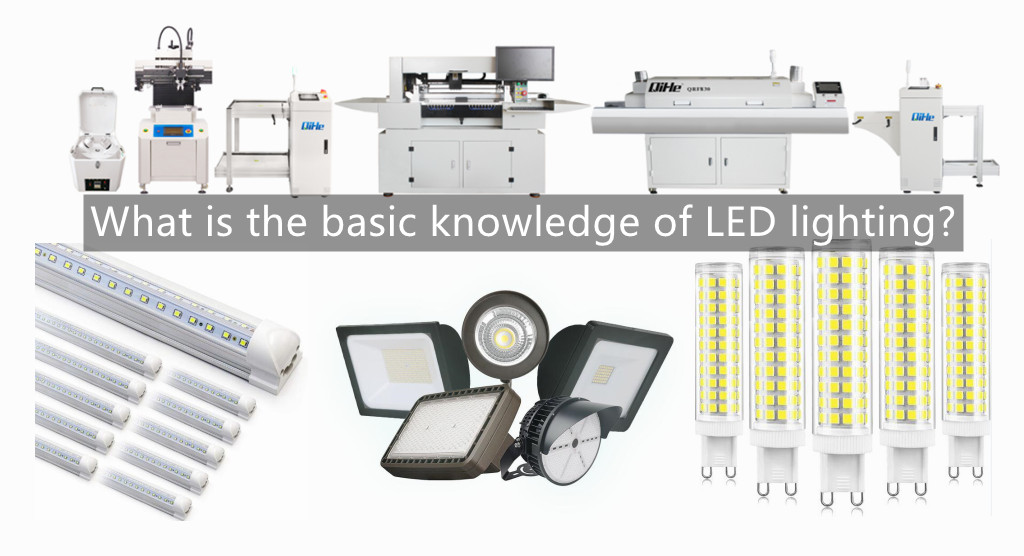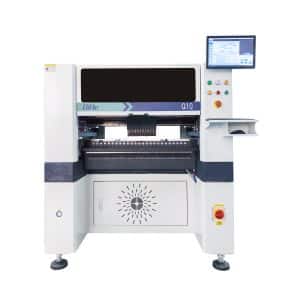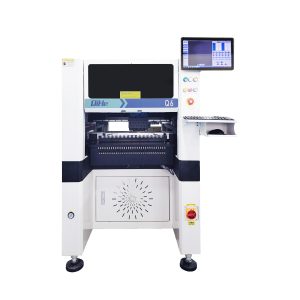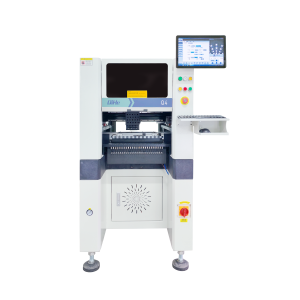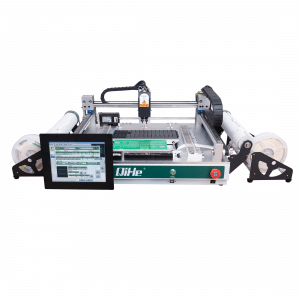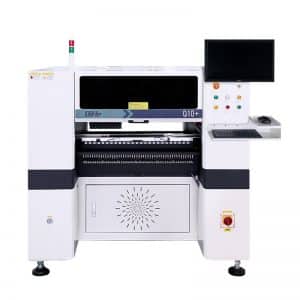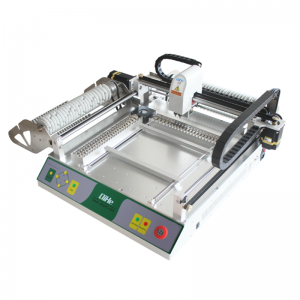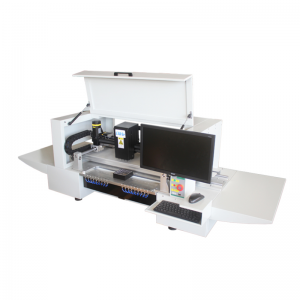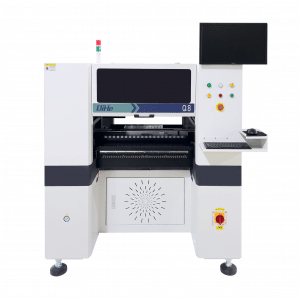LED stands for light emitting diode. LED lighting products produce light up to 90% more efficiently than incandescent light bulbs. How do they work? An electrical current passes through a microchip, which illuminates the tiny light sources we call LEDs and the result is visible light.Today author from QiHe smt pick and place machine sharing you with the details .
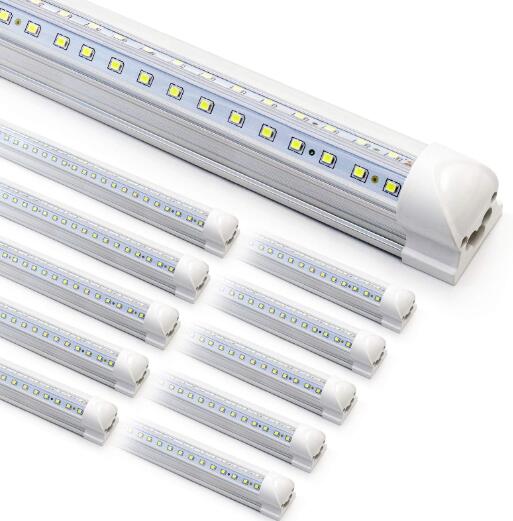
Brief Introduction of Light Bulb
- Tungsten bulbs, including incandescent bulbs, quartz bulbs and halogen bulbs.
Commonly used incandescent bulbs are: Type A, B, C, G, R, T, European bulb Base – E14, E27. Among them, B15, B22 can also be used in the UK; North American bulbs Base Type – E12, E17, E26. E-Edison (Edison screw port); B-Bayonet (bayonet)
A. Commonly used quartz bulbs are Type T (JC), MR, JDR-C (GU10).
- Fluorescent tubes are commonly used with FL (T5, T8, T12…), PL-S, PL-C, 2D and energy-saving lamps.
Note: For tungsten filament bulbs and FL fluorescent tubes, the usual method of expression is: the letter indicating the type (Type) plus Arabic numerals, for example: A19, B10, C7, G25, S11, T8…, where the Arabic numerals indicate the approximate diameter of the bulb, such as the diameter of the A19 bulb D = 19*1/8″, and then multiplied by 25.4 is the bulb diameter in mm.
Relevant definitions
- Luminaire: Any device capable of distributing, transmitting or transforming the light emitted by one or more light sources, and including the parts necessary to support, fix and protect the light source (but not including the light source itself), as well as the necessary electrical auxiliary devices and the facilities for connecting them to the power supply.
- Ordinary luminaires: luminaires that provide protection against accidental contact with live parts, but do not have special protection against dust, solid foreign objects, and water resistance.
- Portable luminaire: A luminaire that, in normal use, can be moved from one place to another after being connected to a power source.
- Fixed luminaire: A luminaire that cannot be easily moved from one place to another because it is so fixed that it can only be removed with the aid of tools.
- Recessed Luminaire: A luminaire that is specified by the manufacturer to be fully or partially recessed into the mounting surface.
- Live Parts: Conductive parts that may cause electric shock during normal use. The center conductor shall be regarded as a live part.
- EN safety extra-low voltage (SELV-safety extra-low voltage): In a circuit isolated from the power supply by such as a safety isolation transformer or converter, the effective value of the AC voltage between conductors or between any conductor and ground does not exceed 50V.
- UL low-voltage lines: lines whose open-circuit voltage does not exceed the effective value of AC voltage 30V.
- Basic Insulation (EN): Insulation added to live parts to provide basic protection against electric shock. The withstand voltage should be above 2U+1000V (U: local grid voltage).
- Supplementary insulation (EN): An independent insulation added to the basic insulation to provide protection against electric shock when the basic insulation fails. The withstand voltage value should be above 2U+1750V (single layer).
- Double-layer insulation (EN): The insulation composed of basic insulation and supplementary insulation, the withstand voltage value should be above 4U+2750V (that is, the sum of the withstand voltage of basic insulation and supplementary insulation).
- Reinforced insulation (EN): A reinforced insulation whose insulation effect is equivalent to that of double insulation. Generally speaking, it is generally only one layer, but it can also be composed of multiple layers, and each layer cannot be clearly divided and measured separately. The withstand voltage value should be above 4U+2750V.
- CLASS O lamps (EN): lamps that only use basic insulation as an electric shock protection measure, without protective measures such as grounding.
- CLASS I level lamp (EN): In addition to basic insulation as an electric shock protection measure, other protective measures such as grounding are also used for lamps.
- CLASS II level lamps (EN): lamps with double insulation or increased insulation as electric shock protection measures. Its insulating effect is not dependent on grounding or installation conditions.
- CLASS III lamps (EN): lamps that use extra-low safety voltage (SELV) as the protection method against electric shock.
- Normally flammable material: The ignition temperature of the material is at least 200°C, and the material will not deform or lose its strength at this temperature. For example, wood and wood-based materials with a thickness greater than 2 mm.
- Flammable material (readily flammable material): A material other than ordinary combustible materials and non-combustible materials. Examples include wood fibers and wood-based materials with a thickness of less than 2.
- Non-combustible material: Material that cannot support combustion. Such as metal, cement, etc.
- Type test (type test): The purpose of testing the type test samples is to check whether the design of a given product meets the requirements of the relevant standards. However, whether the products that pass the type test meet the requirements of the standards during the production stage needs to be guaranteed by test reports and related documents.
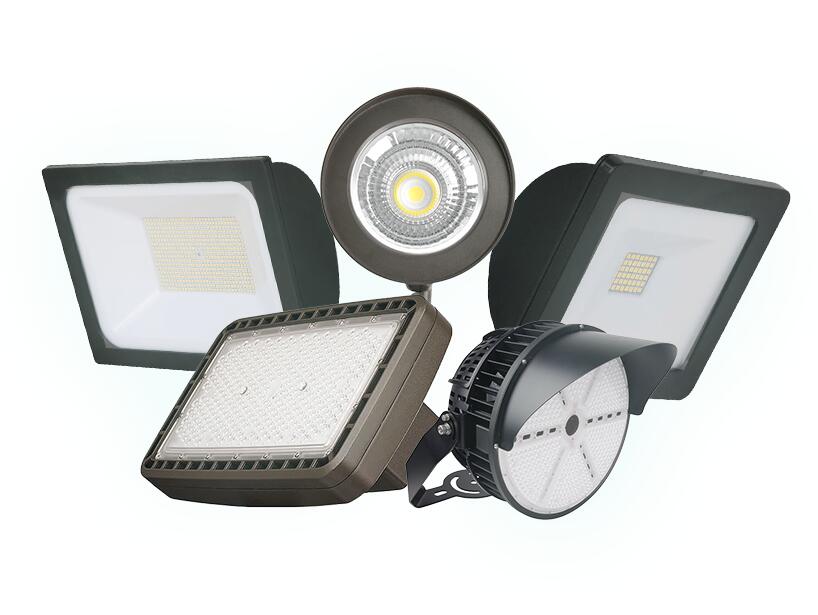
Classification of lamps
According to the installation method:
Movable lamps: table lamps, hanging wall lamps, floor lamps Fixed lamps: ceiling lamps (ceiling lamps), pendant lamps, wall lamps, recessed lamps, track lamps.
Use environment:
EN-standard
1) Indoor use: indicated by the symbol , the outer surface of the metal parts should be treated with anti-corrosion;
2) Outdoor use: use the symbol to indicate that the outer surface of the metal parts should be treated with anti-corrosion; special requirements: water spray test (that is, a minimum Ф3.2mm leak hole is required), and the inner and outer surfaces of the metal parts should be treated with anti-corrosion.
UL/CSA specification
1) Dry location (DRY LOCATION): At most, the humidity is high temporarily. Such as living room, living room, kitchen and other indoor environments.
2) Damp LOCATION: At least periodically, moisture liquefaction will occur. For example, indoor humid environments such as bathrooms and cellar freezers, as well as covered outdoor environments such as balcony canopies and door rain covers.
3) Wet location (WET LOCATION): At least it will suffer from raindrops or water splashes. Such as underground, underwater and all outdoor environments and indoor environments that can be exposed to water such as car washes.
Note: The main special requirements for damp environment and wet environment: water spray test (that is, the minimum water leakage hole is required to be 3.2mm), the inner and outer surfaces of metal parts should be treated with anti-corrosion, and the conductive contact pieces of lamp holders should be corrosion-resistant (copper end pieces).
According to the category of use standards
- North American system: mainly UL/CSA standard system. The voltage is AC100V~127V, 60HZ, including some countries in North America and South America, as well as Japan, the Philippines, Taiwan and other former American colonial areas.
UL Lab. The product is tested according to CSA standard, and if it is qualified, it can be exported to Canada with cUL MARK.
2. International Electrotechnical Commission (IEC-International Electrotechnical Commission) system: including most countries and regions in Europe, Asia, Australia, Africa, and Southeast Asia. The listed specifications refer to EN60598 series standards plus some special requirements of the country (region) (such as voltage, plug type, etc.). my country joined the IEC in 1957 and is currently a member of the IEC Council, Executive Committee and Conformity Assessment Bureau. The national standard GB7000 series of the lighting industry corresponds to the IEC60598 series.
Among them, IEC (EN) products can also be subdivided into the following categories:
(1) According to the degree of protection against electric shock:
A. CLASS 0 lights, no representative symbol.
Features: The power supply voltage is above 50V high voltage/single-layer insulation/no grounding.
B. CLASS I class lights, no representative symbol. Single-layer insulation structure, exposed and touchable metal needs to be grounded. Part of the structure of CLASS I lamps can be CLASS II structure.
Features: The power supply voltage is above 50V high voltage/single-layer insulation/grounded.
C. CLASS II lamps are represented by the symbol ” “. Class II lamps are usually double-insulated, but part of the structure can be CLASS III (such as the low-voltage part after the transformer). (Built-in transformers should be designed as Class II lamps).
Features: The power supply voltage is above 50V high voltage/double insulation/no grounding.
D. CLASS III lights. Indicated by the symbol ” “, the power supply is safety extra-low voltage SELV (external transformer in-line lamps)
Features: The power supply voltage is below 50V and low voltage/single-layer insulation/no grounding.
(2) According to the IP index of dustproof, solid foreign matter and moisture-proof ability: IPXX
The first digit: Dustproof and solid foreign body index, divided into seven grades of 0-6. The larger the number, the stronger the ability to prevent dust and solid foreign objects.
0: no protection;
1: Anti-solid foreign matter larger than 50mm;
2: Prevent solid foreign objects larger than 12mm;
3: Prevent solid foreign objects larger than 2.5mm;
4: Anti-solid foreign matter larger than 1mm;
5: Dustproof;
6: Dust dense
The second digit: the moisture resistance index, divided into nine grades from 0 to 8. The larger the number, the stronger the moisture resistance;
0: no protection;
1: anti-drip (vertical);
2: Anti-drip (tilt 15 degrees);
3: Anti-spray water (60 degree range);
4: Anti-splash water;
5: Anti-spray water:
6: Anti-violent waves;
7: Anti-immersion effect;
8: Anti-diving impact.
Note: 1) The protection level of ordinary lamps and lanterns is IP20, which generally does not need to be marked.
2) The protection grade IP# of outdoor lamps is generally IP23 or above, and it needs to be marked.
3) According to the flammability of the installation surface:
A. Luminaires suitable only for direct installation on non-combustible surfaces are indicated by the symbol ” “.
B. Luminaires suitable for installation on ordinary combustible surfaces are indicated by the symbol ” “.
C. Where it can be installed on a common combustible surface and the heat insulation material may cover the luminaire (that is, embedded), it is indicated by ” “.
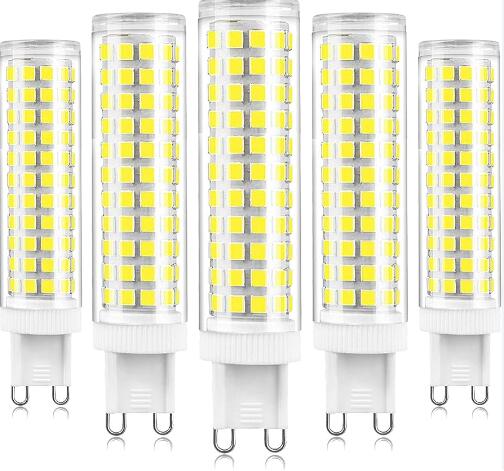
main electrical components
Material requirements:
UL/cUL/CAS specification: The current carrier (conductor) must be copper, copper alloy, nickel alloy, or stainless steel.
EN specification: Current-carrying parts (conductors) shall be made of copper or a copper alloy containing at least 80% copper or a material with at least the same electrical conductivity.
- Lamp holder:
1.1 UL/cUL/CAS specification (AC120V 60HZ)
The specifications are E26, E17, and E12. Ceramic and Bakelite lamp holders are mostly used, and aluminum lamp holders cannot be used. E26 lamp holders mostly have switches, while E17 and E12 lamp holders do not have switches. UL certification is required.
1.2 EN specification (AC220V~230V 50HZ)
The specifications are E14 and E27 threaded lamp holders, most of them are plastic lamp holders, there are also ceramic lamp holders, and there are fewer Bakelite lamp holders. The E27 lamp holder generally has a temperature resistance of 210°C (60W or below), and the 100W generally uses a ceramic lamp holder. Generally, the lamp head does not have a switch. VDE or corresponding certification is required.
1.3 SAA/BS specification (AC240V 50HZ)
Commonly used B22 and B15 bayonet lamp holders, regardless of polarity, also use E27, E14 threaded lamp holders, generally without switches.
- 4 GB specification (AC220V 50HZ)
E14 and E27 threaded lamp holders are commonly used, and there are also B22 bayonet lamp holders. CQC certification is required.
- switch
2.1 UL/cUL/CAS specifications:
A. Rotary switch: such as lamp head switch, base switch.
B. Midway switch: the length from the midway switch to the outgoing line is not less than 20cm.
C. Rectangular toggle switch: It is mostly used for quartz lamps, and some table lamps are also used. The general installation requirements are up and down, front and back, left and right, but the principle is to meet customer requirements.
D. Dimmer: There is a rotary type: that is, gradually from dark to bright, stepless dimming. Three-position type: weak light → light → off
E. Touch switch: four-position type → weak light → bright → strong light → off
2.2 EN Specifications
A. lamp head push switch
B. The installation direction of the base toggle switch is the same as that required by UL
C. The installation direction of the square toggle switch is the same as that required by UL
D. Half-way switch (single-pole system): Generally, the length from the half-way switch to the outlet position is not less than 20cm; Foot switch (press switch or dimmer): Generally, the distance from the outlet position to the foot switch is not less than 30cm.
2.3 SAA/BS specification
SAA switches generally use double-pole switches, which are divided into base switches and mid-way switches (double-pole system), unless customers have special requirements; BS uses single-pole systems, which are the same as VDE requirements.
2.4 GB specification
Use switches certified by CQC and CCC, push switches for desk lamps and clip lamps, the length from the switch to the outlet position is not less than 20cm; floor lamps use foot switches; the distance from the outlet position to the foot switch is not less than 30cm.
- power cable:
3.1 UL/cUL/CAS specifications: SPT-2 transparent power cords are generally used with plugs with holes in the big and small pins. The insert material is required to be nickel-plated copper. There are also black plug wires, large and small pins with double straight pins and flat plugs, the outer diameter of the N-pole wire is thicker and has straight ribs, and the outer diameter of the L-pole wire is thinner and smooth. Black and white lead wires are used inside the lamp body. Generally, the black lead wire is connected to the L pole, and the white lead wire is connected to the N pole.
The length of the outlet wire is not less than 6 feet from the outlet position to the plug, and the company stipulates that it is not shorter than 1.80m. The wiring method generally uses closed-end connectors (pacifiers) and screw-in connectors (toothpaste caps).
3.2 EN Specifications
Two-core double-insulated wire, two-pin round plug. There are brown wires and blue wires inside, the brown wire is connected to L pole, and the blue wire is connected to N pole; three-core double insulated wire, three-pin round plug, inside has brown, blue and yellow-green two-color lead wires, of which the yellow-green two-color wire is the ground wire. When installing the switch, the live wire must be controlled. The length of the power line outlet is required to be 1.85m.
3.3 SAA/BS specification
SAA uses double-insulated plug wires, the plugs are two-piece flat-pin eight-shaped (regardless of size), BS uses double-insulated BS specification wires, without plugs, BS plugs are designed as I-type, and are installed by the production line or by customers.
3.4 GB specification
Use double-insulated power cords with double straight-leg flat plugs. The pins are regardless of size and have no holes. The power plug-in cord must have the CCC certification mark, and the length of the outlet line is the same as the VDE requirements.
- transformer
4.1 UL/cUL/CAS specifications
The primary voltage of the UL/CSA transformer is 120V, and the secondary is different according to the needs, generally 12V. Because the secondary voltage is low and the current is large, the secondary pole outlet is relatively thick. The transformer requires UL/cUL/CAS certification.
4.2 EN Specifications
The primary input voltage is 230V, the secondary output voltage is mostly 12V, and the fuse is connected to the primary. VDE certification is required.
4.3 GB specification
Suppliers with CQC or CCC certification are required.
Read more: What is the basic knowledge of LED lighting?Best seller SMT Machine :Qihe smt line products
-
TVM925 SMT pick and place machine 4 head 38 feeders slots assembly of electronic components
-
Q10 SMT Automatic pick and place machine 10 Heads 100 Slots High Precision and High Efficiency SMT/LED Assembly
-
Q6 SMT pick and place machine 6heads 50slots With PCB Rail Servo Pick&Place Machine
-
Q4 SMT pick and place machine 4heads 50slots With PCB Rail Servo Pick&Place Machine
-
TVM802B Plus SMT pick and place machine 2heads 58slots desktop pick&place deluxe edition
-
QM10 SMT pick and place machine 10heads 80slots Fully Automatic Chip mounter SMT Assembly
-
TVM802BX SMT pick and place machine 2heads 46slots desktop pnp mounter deluxe edition
-
QL41 SMT pick and place machine 4heads 8slots LED for 1.2meters led strip pick&place machine
-
Q8 SMT pick and place machine 8heads 80slots Fully Automatic Chip mounter SMT Assembly
What is SMT in engineering?
Surface mount technology is a part of the electronic assembly that deals with the mounting of electronic components to the surface of a PCB. Electronic components mounted this way are called surface-mounted devices (SMD). SMT was developed to minimize manufacturing costs while making efficient use of board space.Qihe SMT company develops and produces all kinds of SMT equipment suitable for world wide market, including pnp machine,reflow oven,stencil printer,pcb handling machines,and other products.
Small desktop pick and place machine TVM802A,TVM802B,TVM802AX,TVM802BX series suitable for beginners, for hobbiest or low vol usag.
Advanced level 4-head LED strip placement QL41 led machines and with rail universal series TVM925S,TVM926S,
Fully automatic 6-10-head placement QM61,QM62,QM81,QM10,machines, which are suitable for high volume mass production in factories.
Know more about us https://www.qhsmt.com/about-qihe-smt-equipment/
Follow us on social media https://www.facebook.com/Qihesmt/
What is SMT in programming?
Offline Automated Programming vs Inline SMT Programming
Qihe pick and place machine can be programmed directly on the SMT equipment .
Or Coordinates can also be imported csv file through programming software.
Currently supported software such as protel,DXP,Altium Designer,Pads,Candes,proteus,DXP.
Inline SMT programming is a solution to consider for narrow segments of device programming requiring short programming times, with medium to high volume, for just one device type.
WHAT IS SMT pick and place machine?
SMT (Surface Mounted Technology) is a comprehensive system engineering technology, which covers substrates, design, equipment, components, assembly processes, production accessories and management. When it comes to SMT pick and place machines, the automatic SMT production line requires automatic loading and unloading machine, automatic solder paste printing machine, placement machine, reflow soldering machine, AOI inspection equipment, conveyor,connecting table, etc. For these SMT assembly line equipment, Qihe SMT can offer you machines in prototype SMT line, small SMT production line, mass production SMT line at low SMT line cost. Contact us now if you are interested.
WHAT IS SMT ASSEMBLY LINE?
With the development of technology, future electronic products will be lighter, smaller and thinner. Traditional assembly technology can no longer meet the requirements of high-precision and high-density assembly. A new type of PCB assembly technology-SMT (Surface Mount Technology) has emerged. SMT Assembly is the use of automated machines to assemble electronic components on the surface of the circuit board. Its density, high speed, standardization and other characteristics occupies an absolute advantage in the field of circuit assembly technology. In addition, SMT assembly has a wide range of uses.
https://www.qhsmt.com/fully-automatic-smt-pick-and-place-machine-line/

